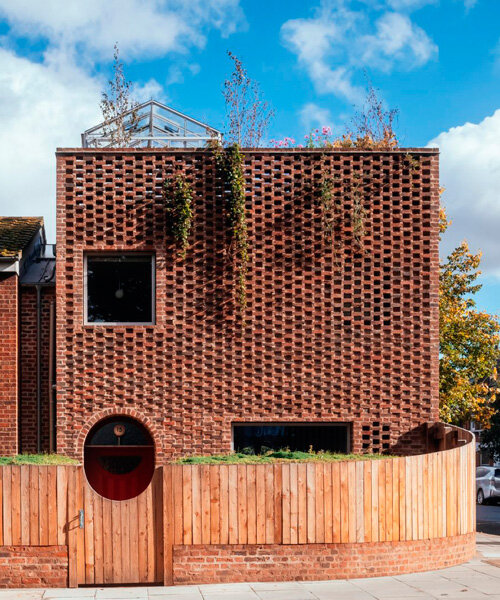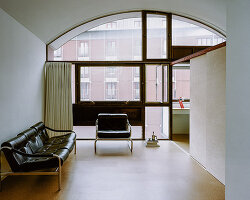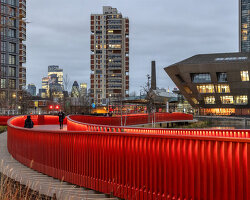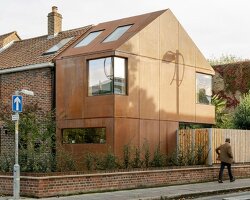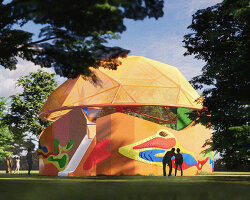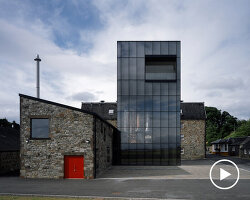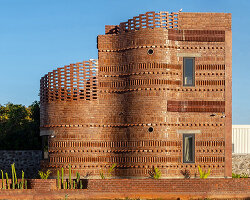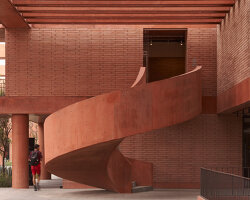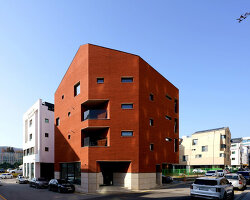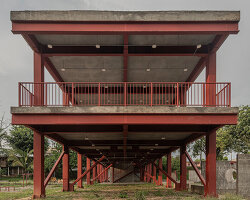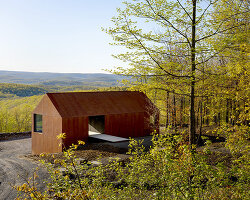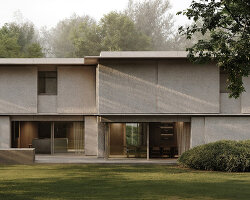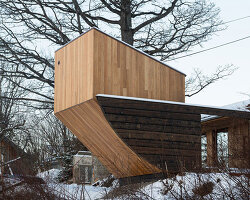Peckham House takes shape in south london
Surman Weston has completed its first self-build project, Peckham House, in south London. The new residence, monolithic in its form and veiled in a distinctive hit and miss brickwork, is delicate and crafted, referencing and playfully subverting the motifs in Peckham’s vibrant and eclectic urban neighborhood. Spanning five years, it is the practice’s first self-initiated project working as client, architect and contractor, affording freedoms and broadening experience beyond the parameters of a traditional architectural project; allowing the directors Tom Surman and Percy Weston the opportunity to set the brief, manage the budget and control the build, honing and improving the design during the construction phase. Stepping into the role of the contractor has rebooted a passion for making, which has always been a principal driver of the RIBA Stephen Lawrence Prize winning practice.
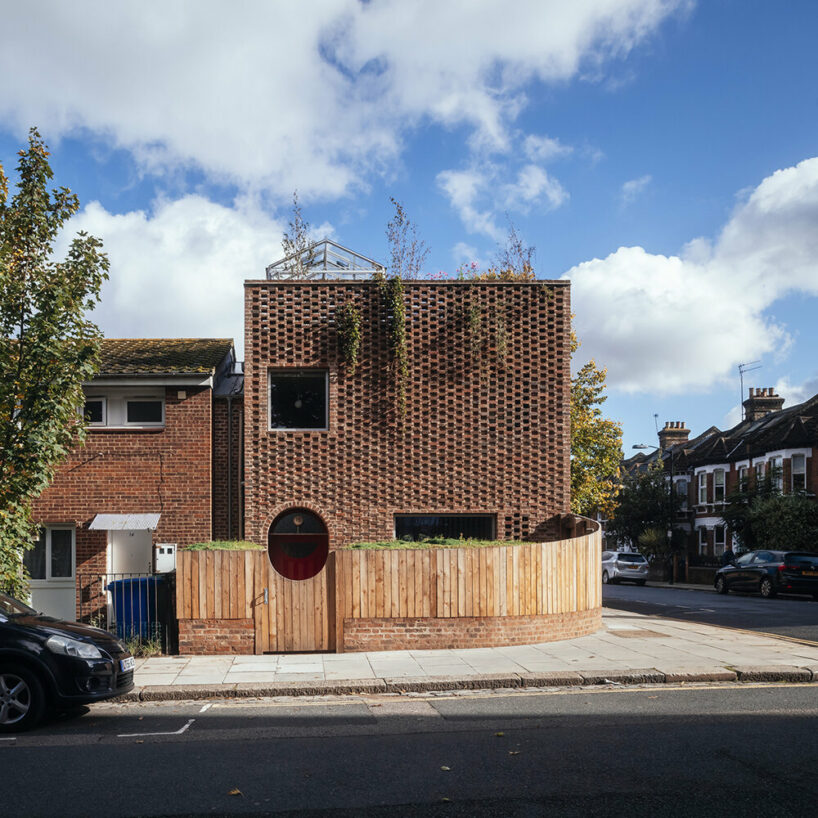
images © Jim Stephenson (unless stated otherwise)
surman weston on its first self-build project
Following a two-year search which began in 2016, the council-owned site, a small patch of scrubby grass in Peckham was purchased at auction. Located at the end of a short two-storey terrace built in the 70s, facing Victorian terraced housing of Moncrieff Street, and a stone’s throw from Peckham Levels, a brutalist multi-storey car park (now a creative workspace and a defining feature of central Peckham), Surman Weston saw great potential in the site but bought it without the assurance that it could be developed. The challenge was to reconcile the conditions of the constrained, exposed urban plot to create a generous and contemporary family house. There followed a lengthy process of design development, testing a multitude of options in close consultation with Southwark Council, before obtaining planning permission.
‘Because this was a self-build project, we could be inventive, imaginative and resourceful and respond to the context and quirks of the project as they unfolded. We changed our minds plenty of times throughout the build and we think the house got better each time we did. It became more handcrafted and as a result the house has a richness of character, detail and texture. It is an expression of our interests and personalities and is the antithesis of so many bland new-builds,’ Tom Surman shares
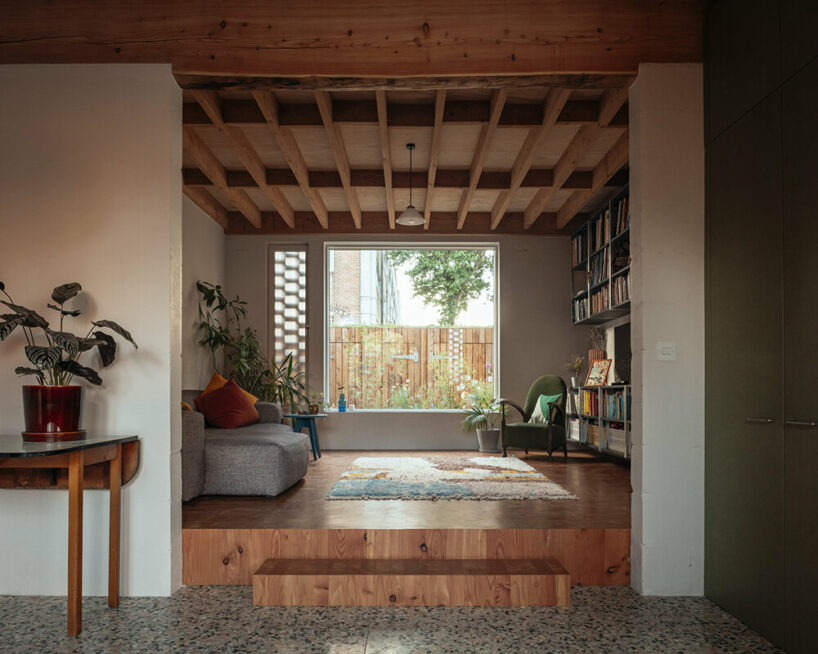
Peckham House is the studio’s first self-build project
a distinctive hit and miss brickwork
In plan Peckham House by Surman Weston aligns with the existing terrace, creating a generous front and more compact rear garden space, however, its form is a clear departure from the established double-pitched roofline. It takes the form of a monolithic cuboid with a flat roof, bookending the corner, with the parapet aligned with the adjacent ridgeline of the pitched roof terrace. The flat roof echoes the roof of Peckham Levels and creates a third, more secluded garden in the form of a roof terrace – an elevated and green oasis in which to retreat from the intensity of central Peckham. The house is designed with a brick facade referencing the load-bearing handmade stock bricks of the Victorian terrace and the machined brick infill panels of the car park. Bricks are arranged in a hit and miss system to attenuate what would otherwise appear as a monolithic form.
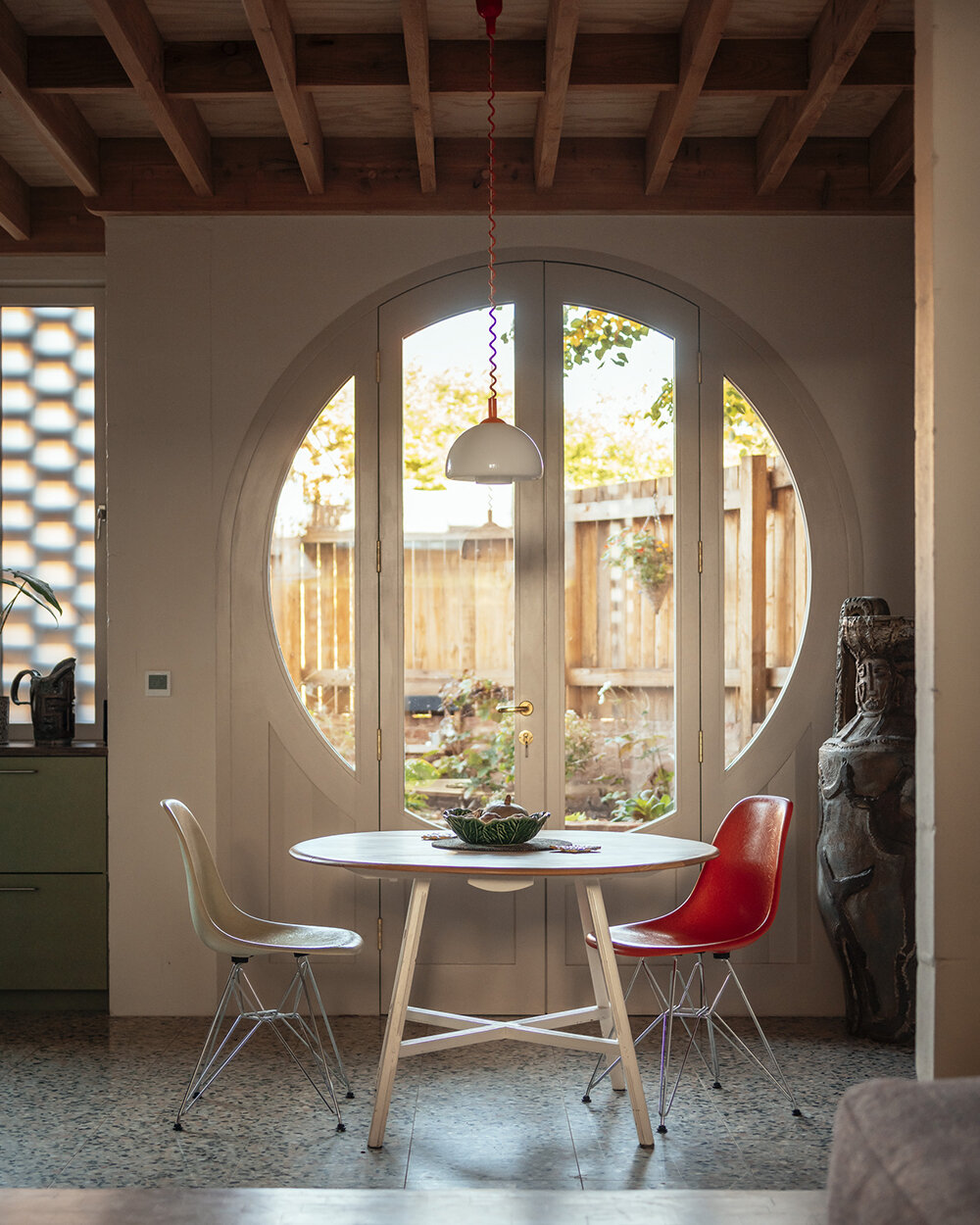
openings and entrances are carefully placed by Surman Weston
As one ascends the interiors, the header bricks in the Flemish bond brickwork are gradually set back further and further, forming a gradient of shadow. Greater gaps at the roof terrace level reveal multi-stem birch trees and twining climbing plants, a glimpse of the oasis at the top of the ascent. The uniformity of the exterior is softened with self-supporting arched openings to the front and rear, a nod to the nearby railway line and the arched detailing on the former car park. This is inverted in the entrance gate, creating a playful geometric arrangement in the street elevation.
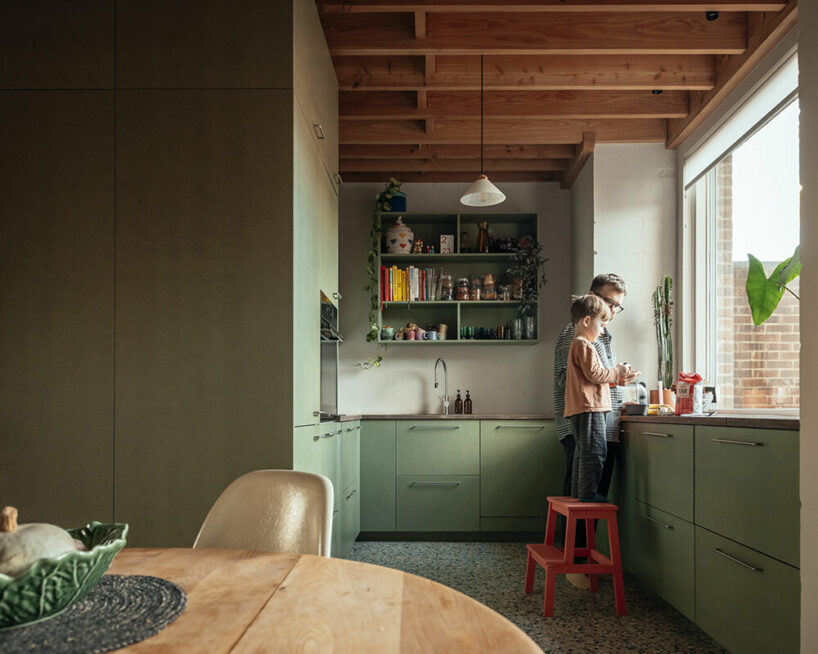
terrazzo floors take over the kitchen space
surman weston follows blueprint of typical terraced houses
Openings and entrances are carefully placed to ensure an engagement with the street from the inside out, whilst offering privacy and a sense of enclosure. Inside, the layout follows the blueprint of the enfilade of rooms in a traditional terraced house, with a widened hallway and the introduction of rooflights to bring daylight into the centre of the plan. Materials and subtle level changes help to delineate the spaces: terrazzo for the entrance and kitchen; English larch end grain floor for the reception spaces; lime slurry on the walls of the ground floor; Tyrolean flicked lime lining on the underside of the stairs; and a warmer pink gypsum plaster for the more private bedrooms. Many of the materials are recycled and there has been a consciousness to limit material waste; from the blockwork walls which are made from recycled construction waste, to the end grain wood block floor, which is assembled from the waste off-cuts of the exposed ceiling joists, to the brick off-cuts which were recycled as pavers in the garden.
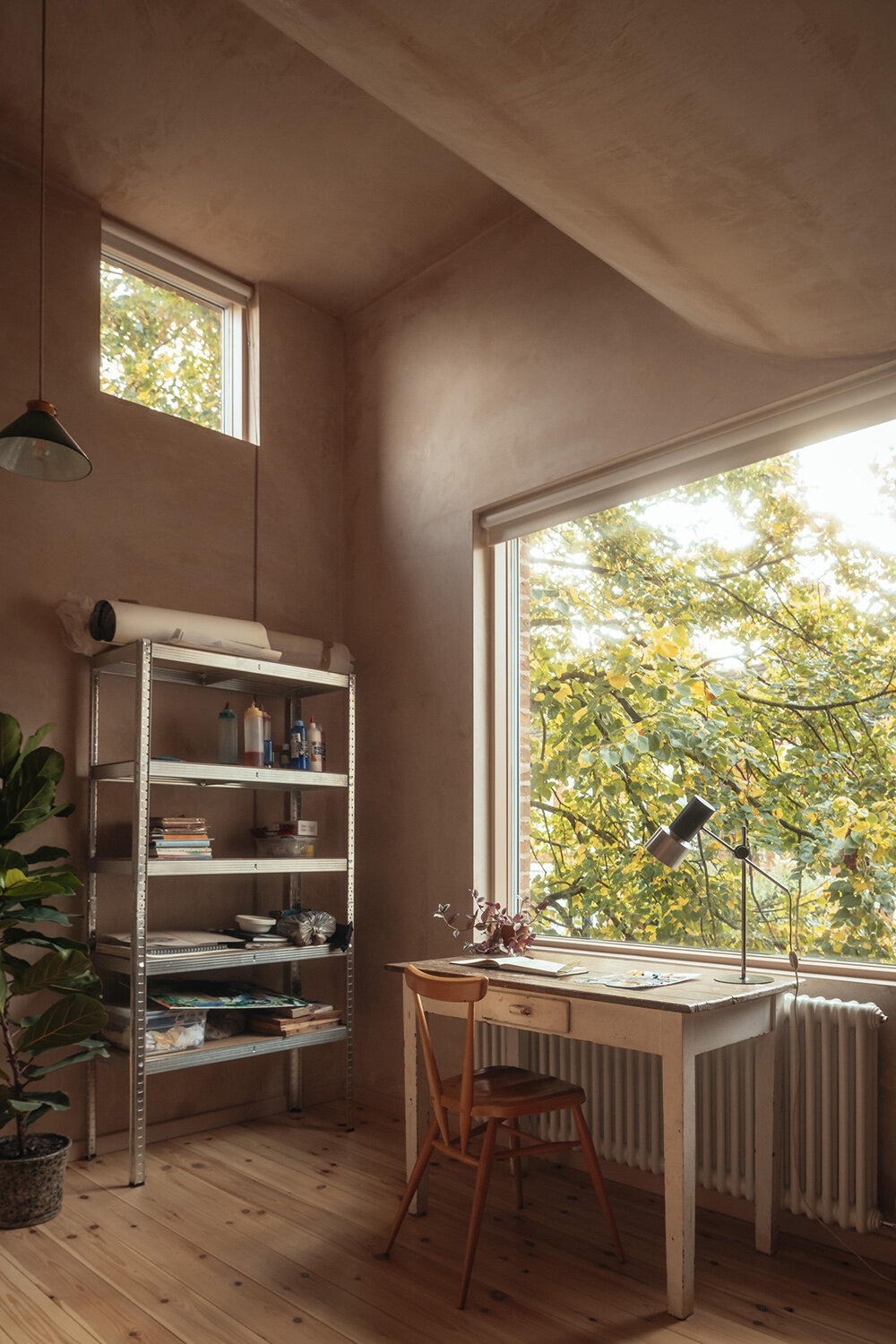
Surman Weston uses a warmer pink gypsum plaster for the more private bedrooms
Inspired by the traditional Victorian terrace, the interior comprises simple, robust materials which will age gracefully, such as pine timber floorboards, which can be painted, sanded or carpeted over. Construction is legible and celebrated throughout: from the exposed bespoke stair treads made of CNC-routered pine planks to the structural timber spine wall beam, which retains the bark of the tree it was originally sawn from. Both directors have been very hands-on in the build, fabricating the timber roof structure, exposed ceiling joists, and larch floor by hand, as well as installing the windows, MVHR system and solar panels. The story of the build and the properties of the materials add texture to the house, giving it character and instilling a sense of homeliness.
The roof terrace is entered through a greenhouse via a hatch clad in insulating cork blocks, a sheltered space which offers a multitude of uses – functioning as a hothouse, winter garden, potting shed, and dining space. It opens out to a roof terrace surrounded by deep flower beds and a sedum green roof, both of which will enhance biodiversity, creating a lush, elevated garden oasis, a haven to retreat from Peckham’s gritty urban environment.
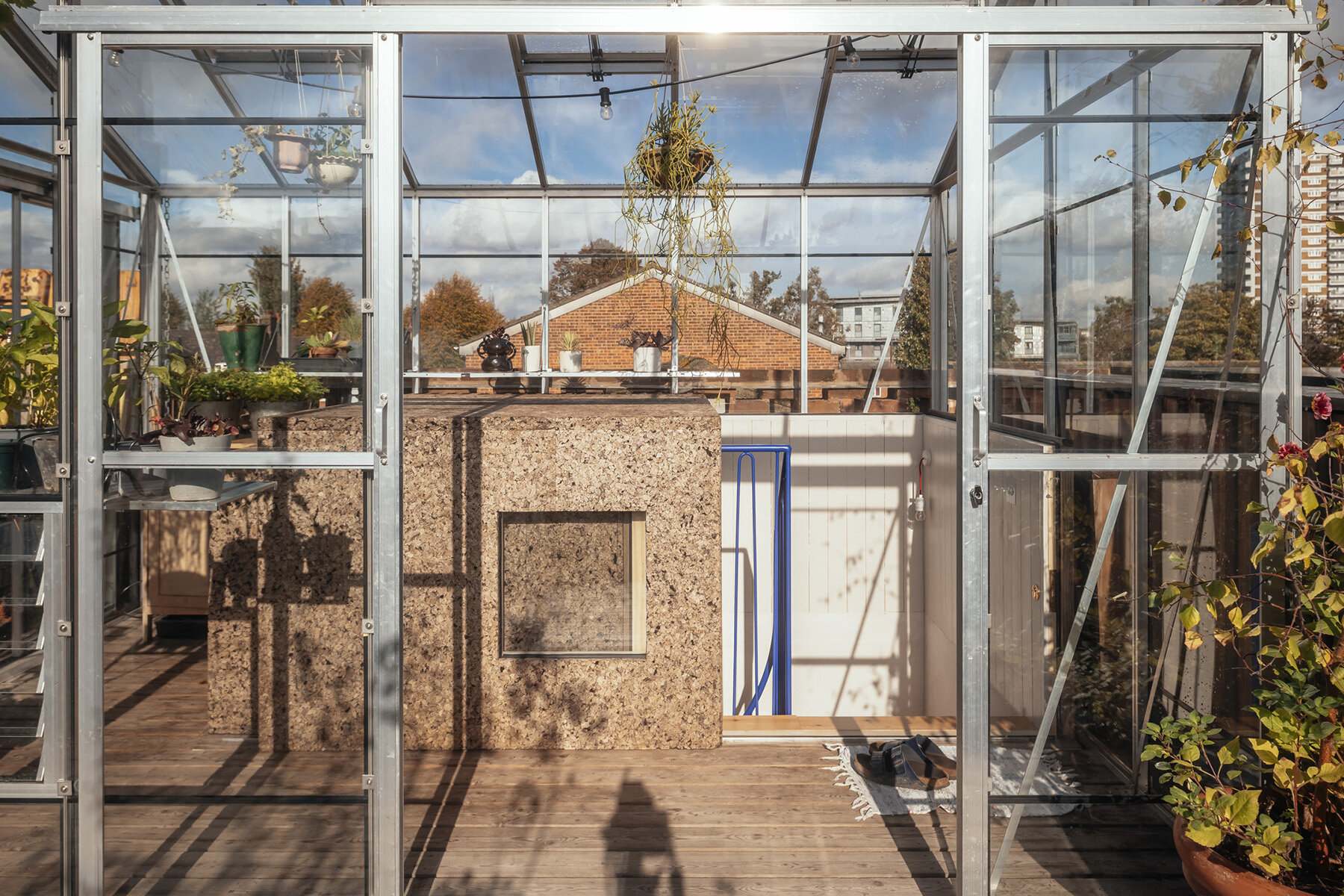
Design choices have been guided by a steadfast ambition to reduce embodied carbon and operational energy. Materials have been sourced locally from the UK. The house is super-insulated with triple glazing and an airtight envelope with mechanical ventilation heat recovery (MVHR), with onsite energy generation in the form of photovoltaics paired with an air source heat pump. Performance data collected to date exceeds LETI’s ambitious targets for energy use and is 80% better than Building Regulation requirements.
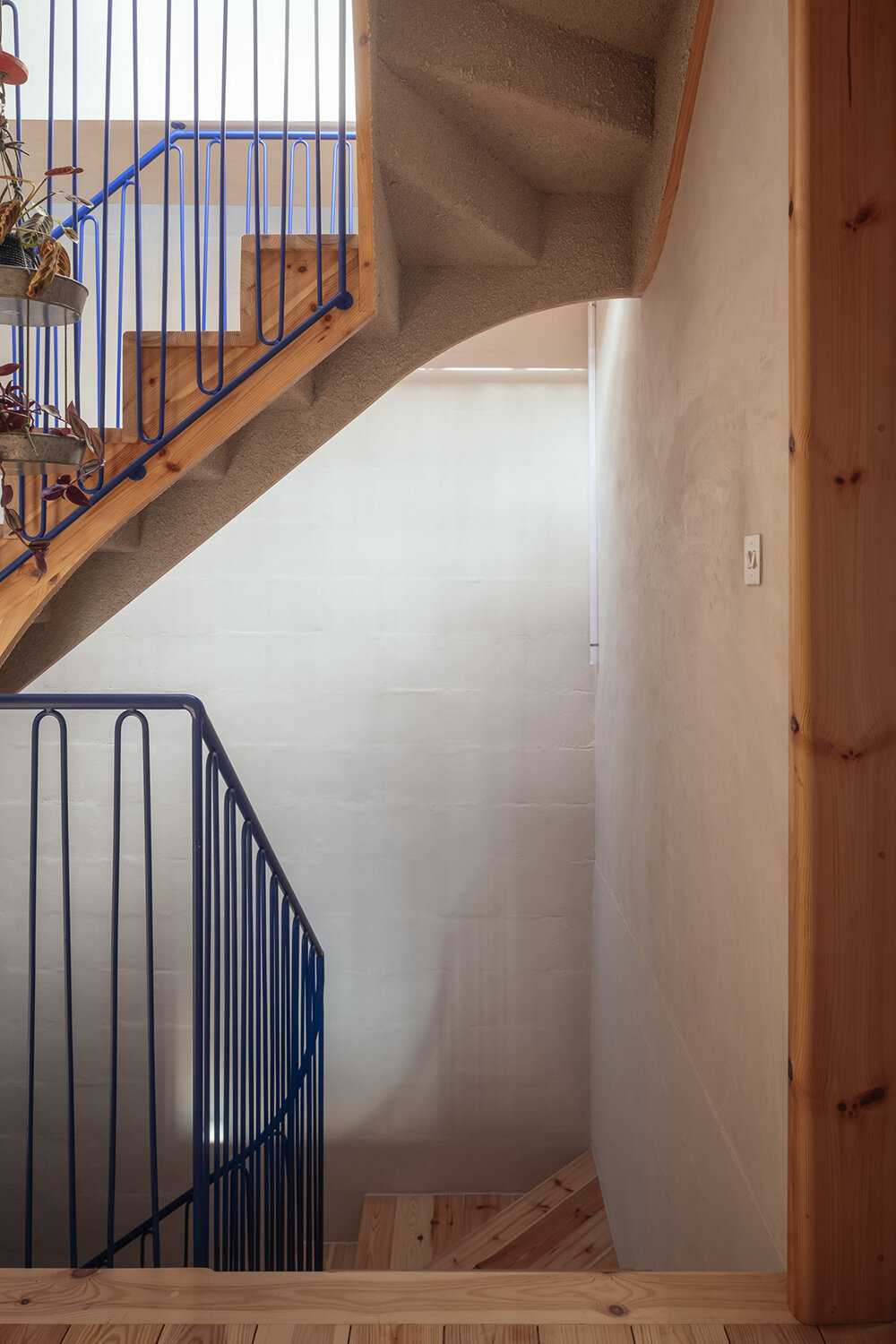
Tyrolean flicked lime lining on the underside of the stairs
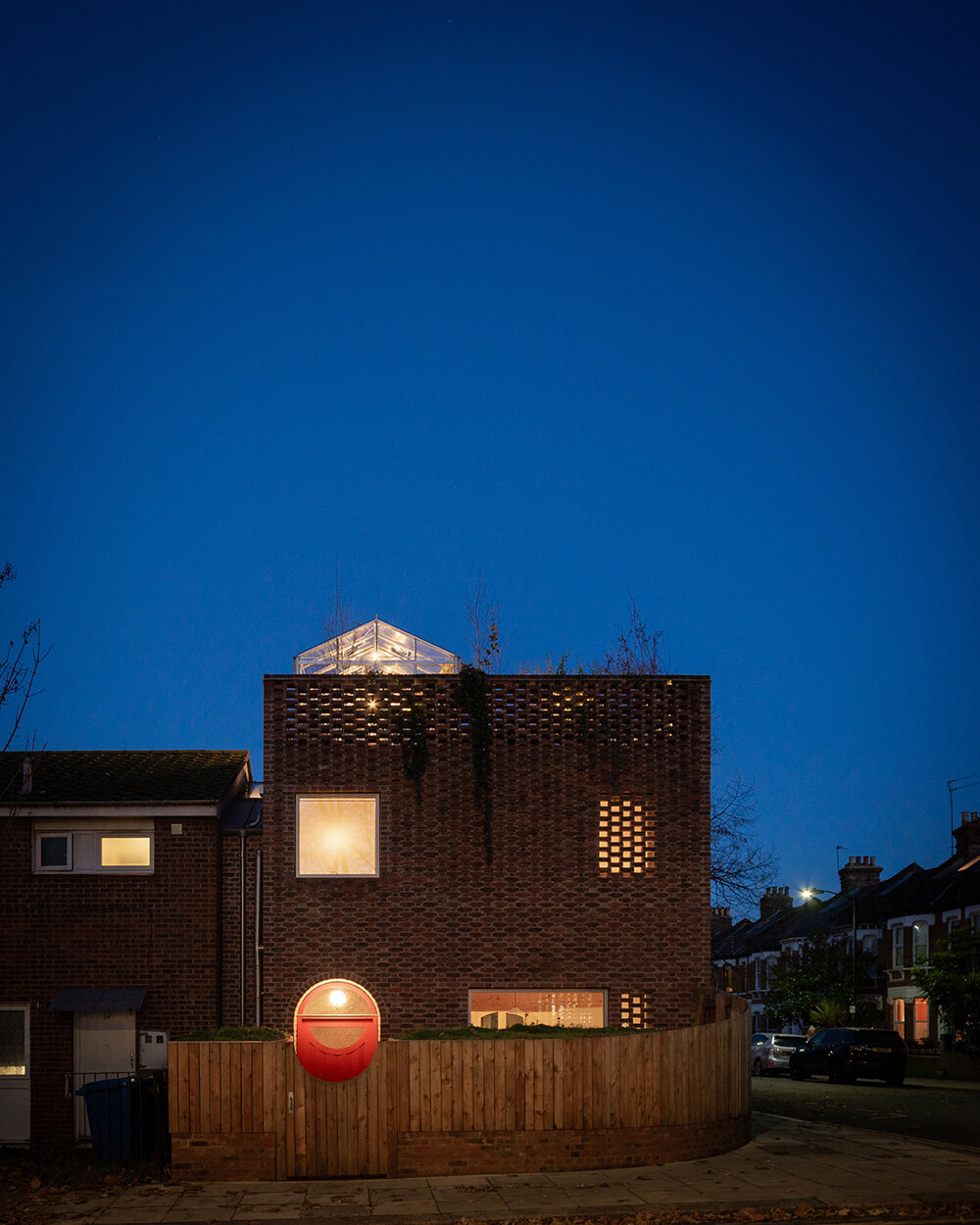
image © Percy Weston
project info:
name: Peckham House
location: London
architect, contractor, client: Surman Weston (here) | @surmanweston
design team: Percy Weston (project architect), Tom Surman, Hilly Murrell, James Channing, Patrick Straub
structural engineer: Structure Workshop
services engineer: Peter Deer and Associates
planting design: Lidia D’Agostino Garden Design
photographers: Jim Stephenson | @clickclickwithjim, Percy Weston
